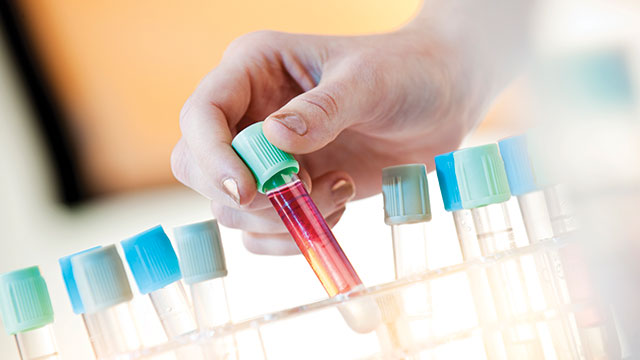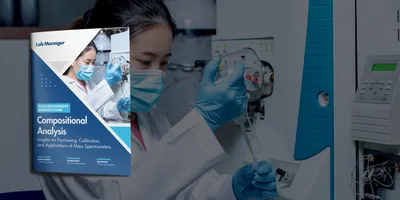
Gas chromatography mass spectrometry (GC-MS) is the historically favored approach to toxicological drug screening. General unknown analysis—a broad screening method that screens for over 4,000 substances—is traditionally conducted with GC-MS techniques, but in recent years it has been steadily overshadowed by liquid chromatography mass spectrometry (LC-MS) methods.
Comprehensive screening of biological samples in forensic and clinical toxicology is not possible without powerful, highly sensitive instruments. Such instruments allow researchers to focus their work on the explicit identification of parent drugs and their corresponding metabolites, which is facilitated by the rapid turnaround time, ease of use, and high sensitivity of innovative LC-MS techniques.
Hair, urine, blood, and oral fluid are examples of the wide variety of sample types that forensic toxicology laboratories receive. Some biological matrices pose more screening challenges than others, and oral fluid testing has recently been optimized for general unknown analysis, enabling laboratories to offer a range of services. Health clinics, psychiatric hospitals, prisons, specialist psychiatric prisons, and private physician practices working in addiction medicine are examples of institutions benefiting from such services.
Toxicology case study—Dr. Michael Böttcher’s laboratory
Dr. Michael Böttcher’s laboratory at the MVZ Laboratory based in Dessau, Germany, is renowned for its specialist capabilities in drug screening analysis and toxicological studies, and offers a complete analysis spectrum for a wide range of biological matrices.
As a comprehensive analytical facility, the laboratory receives samples from a range of sources. “At Lab-Dessau we do all kinds of drug testing: therapeutic drug monitoring, drugs of abuse testing workplace drug testing, intoxication cases, [and] clinical drugs testing, especially for addiction medicine. We work for a large number of addiction clinics in large cities like Berlin. We monitor therapeutic drugs in addition to looking for drugs of abuse,” explains Dr. Böttcher.
“We are very specialized in numerous rare drugs tests. We also conduct forensic testing—as we’re forensic accredited, we work for a number of forensic institutes. A lot of customers need new psychoactive substance testing, which is less routine, so they send the samples to us because of our specialist capabilities,” comments Dr. Böttcher. Samples are sent to the laboratory frequently for synthetic cannabinoid testing, as well as testing for synthetic opioids and internet drugs, so-called “legal highs.” Modern “designer drugs” are sent to the laboratory in addition to those that have been on the market for decades. Dr. Böttcher’s laboratory is capable of analyzing drugs from capillary blood samples, urine, hair, and oral fluid—the latter of which has been most recently optimized and is particularly unique to this laboratory.
The laboratory relies on dependable instruments that operate with minimal downtime in order to service customers with time-sensitive samples. The ability to run general unknown analysis—a broad screening method that screens for over 4,000 substances—depends on the comprehensive library of drug compounds available to the lab, so maintaining this as well as updating methods is critical to ongoing research and service development.
GC-MS vs. LC-MS
GC-MS is the traditional approach to toxicological drug screening using general unknown analysis, but has steadily been overshadowed by the rapid turnaround time, ease of use, and high sensitivity of innovative LC-MS methods. Despite the increased popularity of LC-MS, Dr. Böttcher’s laboratory still uses GC-MS for screening certain samples, as some substances are not visible with LC-MS. For routine work in undirected screening, the laboratory now uses the Toxtyper™—a multistage accurate mass spectrometry (LC-MSn) library-based solution from Bruker Daltonics.
“For routine general unknown analysis, we don’t use GC-MS anymore, but in some cases, particularly in post-mortems where the matrix may be decomposed, it is still a useful backup technique. Post-mortems produce a lot of ion suppression in LC-MS, and the results are less honest than GC-MS results. The Toxtyper is a better way to handle the samples and get more satisfied customers.”
Related Article: Forensics Applications for Next-Generation Sequencing
The main reason LC-MS is increasingly favored over GC-MS is the reduction in sample preparation time. Dr. Böttcher explains how these time savings occur:
Lab Management Certificate
The Lab Management certificate is more than training—it’s a professional advantage.
Gain critical skills and IACET-approved CEUs that make a measurable difference.
“With GC-MS, you have to complete three sample-preparation steps—hydrolysis, extraction, and derivatization—before you can run the samples, all of which are very time-consuming. All these steps are very selective and this is why we have a loss of substances. In addition, the samples must be run in batches, as sample prep is so cumbersome, so if an urgent sample arrives late, it is uneconomical to add it to the routine. This is disadvantageous for general unknown analysis, as you don’t know what you are searching for in the first place. LC systems do not require these selective sample preparation steps, and therefore random access is possible. Post-run time is also greatly reduced compared to GC-MS, data mining is more efficient, and you don’t need as much experience.”
Screening capabilities
In some cases, customers might know which drug they want to screen for, in which instance a multi-target screening approach can be used. The sensitivity of this method is much higher than that of general unknown analysis (untargeted approach), but in cases of intoxication where the drug group involved is not known, general unknown analysis is required (Table 1).
| General unknown analysis (Untargeted analysis) (Toxtyper™) | Multi-target screening (LC-MS-MS) | |
| Number of Substances | 4000 approx. | Up to 100 (depending on method) |
| Sample type | Oral fluid, urine, blood, vitreous humor, gastric contents, meconium | Oral fluid, urine, hair, blood, vitreous humor, gastric contents, meconium |
| Screening capabilities | General unknown screening Screening for the complete broad range of drugs including:
| Dedicated methods:
|
| Sensitivity | 1-25 ng/ml | 0.1-2 ng/ml (10 x more sensitive); |
Multi-target analysis is conducted and embedded in the laboratory’s multi-target analytical system with LC-MS-MS. This can be modified and adapted to the customer’s individual needs, and currently holds the capability of screening for 68 different substances. The laboratory’s dedicated multi-target methods, for example an opiate method or a benzodiazepine method, are comprehensive for that specific substance class.
“The customer usually decides when we conduct multitarget analysis or general unknown analysis, but this can depend on the case. For example, if a certain case cannot be solved using one dedicated analysis, general unknown analysis is implemented. But if a customer requests an opioid test, we would use the dedicated opioid method. For the opioid method, we can test for over 65 substances; with the benzodiazepine method, 75 substances; and with the synthetic cannabinoid method, we can test for approximately 100 substances. This can be applied to oral fluid, but also other body fluids,” comments Dr. Böttcher.
In addition to ultra-high-performance liquid chromatography, the LC-MS solution draws upon a comprehensive drug library for toxicological analysis. Dr. Böttcher describes how the availability of such a library facilitates their work:
“When we heard that a library is available, which is at least the same size as the GC-MS library, but with the addition of glucuronides, we were immediately interested. If the library contains all the important glucuronides, hydrolyzing isn’t necessary. To establish such a library on your own is very complicated, because you can’t buy these glucuronide molecules. Hydrolyzing cleaves the glucuronides, which is timeconsuming and selective because some substances are not cleaved 100 percent, and you can’t buy these substances to verify your methods. This is not widespread knowledge and is an important issue in urine toxicology. The combination of the library containing the glucuronides and the Toxtyper instrument is a big success, especially for urine analysis.”
Dr. Böttcher’s laboratory uses two drug libraries for its toxicology work, one developed by Bruker and one by an external scientific institute, the Maurer/Wissenbach/Weber (MWW) Library (Wiley-VCH, Weinheim, Germany, 2014, TT-M2). The laboratory uses Bruker’s library, which contains approximately 1,000 parent substances, for scheduled purposes: there is a narrow detection time window in which the substance must be found if it is present. This leads to increased sensitivity, as the software is directed to the specific substance. The MWW library contains 1,500 substances as well as 3,000 metabolites (including glucuronides), and unlike the Bruker library, it is not indexed on retention time. This means that sensitivity is lower, but the library is extremely comprehensive and also contains the necessary metabolites. This requires two different chromatographic procedures, and therefore both libraries are always run on every urine sample.
The future of toxicology
New methods must be constantly developed in this rapidly changing industry, so laboratories can keep pace with the designer drugs market. Instrumentation and software, therefore, must remain up to date, as must external drug libraries. New psychoactive substances and synthetic cannabinoids are breaking into the market at a rapid rate, which means some drugs may be missing from the current libraries.
Laboratories are able to add substances to LC-MS libraries themselves, but for urine samples, metabolites are also required and cannot be purchased like the parent substances. Updates to urine metabolite libraries are therefore imperative to the continued success of the research and services of forensic toxicology laboratories.











